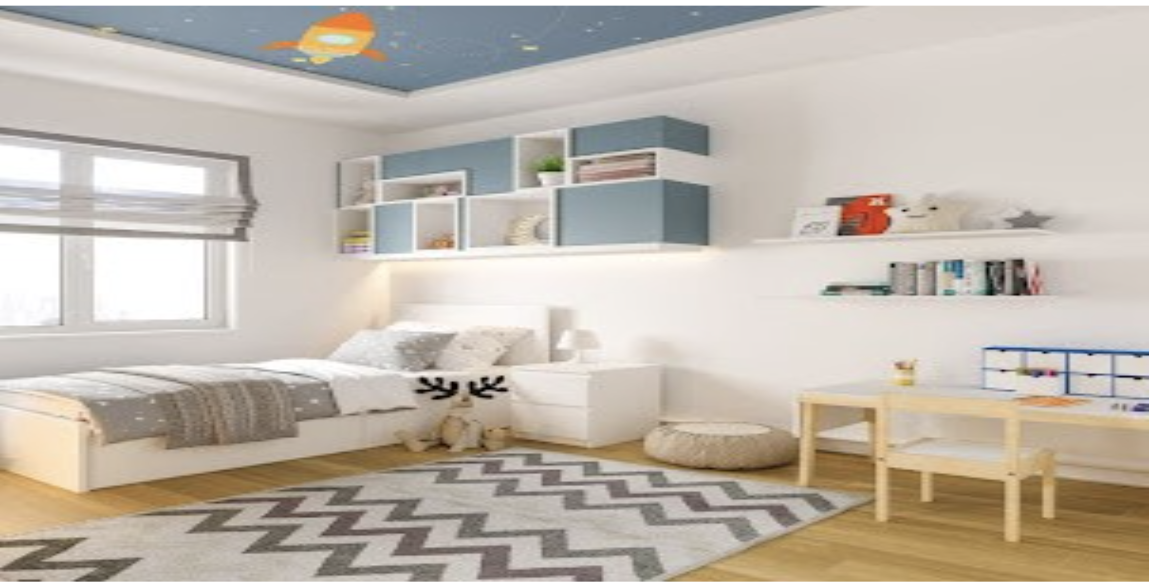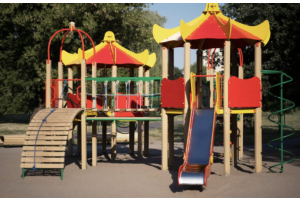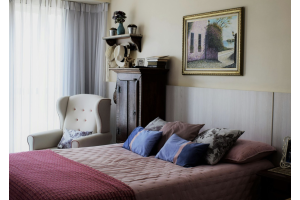Creating a Kid-Friendly Living Space with Durable Furniture

Kids are bundles of energy, and your living space needs to be ready for anything. From impromptu dance parties to fort-building adventures, the furniture you choose will have to withstand the daily wear and tear of family life. Creating a kid-friendly living space isn't just about aesthetics; it's about ensuring safety, durability, and comfort for both children and adults. Here is a guide to creating a space that's stylish yet resilient.
Safety First
The foremost consideration when designing a children's living space is safety.Furniture with rounded edges and corners is ideal to avoid injuries during playtime. Also, avoid furniture with sharp edges, glass surfaces, or small parts that can pose a choking hazard. Ensure all furniture is stable and firmly anchored to walls, especially larger pieces like bookshelves and entertainment centers.
In Katy, Texas, creating a safe living space for children is important due to the active and vibrant lifestyle families lead. The foremost consideration when designing a children's living space is the safety factor. It is a priority for any local furniture store in Katy, TX to offer a variety of kid-friendly, safe furniture options to help parents create secure and enjoyable living spaces for their families.
Tips for Safe Furniture
- Select rounded or padded edges.
- Avoid glass tables and sharp-edged furniture.
- Anchor heavy furniture and appliances into walls.
- Use non-toxic finishes and materials that are safe for children.
Select Safe Materials
Kids put furniture to the test daily. For an attractive yet livable living space, durable materials that resist spills, stains, and roughhousing are a must. Leather, microfiber, and some synthetic fabrics perform wonderfully for durability and cleanability.
Durable Furniture Materials
- Leather: Resists stains; easy to clean with a wipe.
- Microfiber: Resists stains; it's hard-wearing, so perfect for upholstery.
- Denim: Rugged and conceals wear well.
- Treated Wood: Go for treated hardwood with a sealed finish that resists scratches and spills.
Stain-Resistant Fabrics
Stain-resistant fabrics can be a lifesaver for families with young children. Pre-treated to cause liquids to bead up and not stain, these fabrics make cleaning easy and swift. One wants to search for furniture that's specially tagged as being "stain-resistant" or pretreated with protective coatings. Darker colors and patterns will hide minor stains or spills.
Best Stain-Resistant Fabrics
- Crypton: Known for its stain, odor, and resistance to moisture.
- Sunbrella: Originally designed for outdoor use, it is highly durable and easy to clean, making it ideal for indoor furniture.
- Polyester blends: are most often treated for stain resistance and many are easy to clean.

Incorporate Functional Storage Solutions
There is plenty of storage for toys, books, and other things that help to keep the kid-friendly living space in order. For example, consider multifunctional furniture pieces with built-in places where the kids can store their things. An ottoman with hidden storage, a storage bench, or a coffee table with shelves or drawers will provide extra storage. Young parents are often searching the web for a "furniture shop near me" to find pieces that blend practicality with modern style. They look for durable options that can withstand daily use while still complementing their home décor.
Smart Storage Ideas
- Storage Ottomans: Hide toys and games when not in use, creating extra seating space.
- Bookshelves with Baskets: Baskets or bins will help to organize the smaller items but make it easy to access things when they are needed.
- Storage Benches: Ideal for entryways or placed under windows to store shoes, bags, and other paraphernalia.
- Coffee Tables With Storage: Tuck remote controls, magazines, and small toys into them out of sight but accessible.
Opt for Easy-to-Clean Surfaces
Since kids can spill things and create messy situations, easy-to-clean surfaces in your furniture would be a must. Choose furniture with removable, machine-washable covers or materials that can be easily wiped clean with a damp cloth.
Easy-to-Clean Furniture
- Slipcovered Sofas: Covers removable for laundry or replacement to maintain a fresh appearance.
- Laminate or Sealed Wood Tables: These have wipe-clean surfaces.
- Vinyl or Leather Chairs: Wipe clean and easy to keep clean.
Incorporate Kid-Friendly Design Elements
Of course, you want your living space to be durable and safe, but it should also be comfortable and enjoyable for your children. Use pieces that would be appealing to them and useful, like bright rugs, cheerful patterns on furniture, and comfortable nooks for reading.
Key-Friendly Design Tips
- Colorful Rugs: Brighten up a room and offer a safe space for a child to play on the floor.
- Playful Patterns: Apply colorful, patterned cushions, curtains, or furniture for fun.
- Cozy Nooks: Arrange a special reading or play corner with soft furniture and sufficient light.
Invest in Multifunctional Furniture
Space-saving solutions such as convertible furniture can help to get the most out of the available area while meeting the children’s requirements. Be sure to choose versatile furniture, like sofa beds, tables with additional leaves, and furniture that has multiple functions.
Multifunctional Furniture Ideas
- Sofa Beds: Ideal for slumber parties and serve as extra chairs during the day.
- Extendable Dining Tables: Increase the number of guests or activities, for instance, arts and crafts.
- Convertible Furniture: Items such as fold-out desks or nesting tables provide versatility in functional uses.
Ensure Enough Seating
Living space in a family must accommodate all the family members adequately. Select materials that are soft and resistant and ensure that there are enough chairs for everyone in the family, including visitors.
Comfortable Seating Options
- Sectional Sofas: There is enough seating offered and can be arranged according to the size of the area.
- Bean Bags: Recreational and mobile furniture for children that can be shifted from one place to another as needed.
- Poufs and Floor Cushions: Additional chairs may be easily folded when they are not needed.
Personalize the Space
It will thus be possible to personalize the living space in a manner that will ensure that the children spend much time in the space. Include their paintings, family photos, and other items that characterize your living space and make it a part of your family.
Personalization Ideas:
- Display Artwork: Frame and thereafter hang up your children’s artwork. This makes it more personal.
- Family Photos: You can make this with pictures of special family moments.
- Custom Decorations: These are personal accessories that may include name tags, embroidered casings for pillows, or custom-made furniture items.
Encourage Creativity and Play
A living space that is child-appropriate encourages imaginative play. Specify areas for drawing, building, and creative play. Storage is within easy reach for art supplies, blocks, and other toys that foster creativity in your children.
Creative Play Spaces
- Art Stations: A small table or desk is furnished with paper, pencils, crayons, markers, paints, and other materials needed for drawing and making projects.
- Building Stations: A space for blocks or building sets.
- Imaginative Play: Provide a dress-up area or a small stage for dramatic play.
Maintain Flexibility
As your kids grow older, their needs and interests will shift. Opt for furniture that will grow with them. This can be done with modular furniture and pieces that are adjustable, and versatile in design. These will help you in having a workable and stylish living space over the years.
Flexible Furniture Ideas:
- Modular Sofas: Can be rearranged for different needs and spaces.
- Adjustable Shelving: Shelves that can be moved or added when required.
- Versatile Storage: Bins and baskets that can be moved into other rooms as your children grow.
Involve Your Kids in the Process
Engaging your children in the design process gives them a sense of ownership and belonging to the space and thus, increases the chance of them wanting to care for it. Let them choose colors, upholstery, or specific furniture pieces they like and consider their input on the layout of the space.
Tips for Involving Kids
- Color Choices: Let them choose colors for accent items such as throw pillows or area rugs.
- Furniture Selection: Allow them to choose between chairs or places to put their playthings.
- Room Setup: Give them the discretion to organize things as they would want them to be.
Conclusion
Designing a livable, safe, and fun living space when you have kids all boils down to functionality, safety, and style. First and foremost, make sure the space is safe, followed by durable and easy clean-up materials, then include some design elements that are just fun. With a little planning and creativity, it's surprisingly easy to turn your living space, big or small, into a play haven and relaxation haven—all while readying it for whatever kind of adventure comes next.
FAQs
Which materials are suitable for furniture meant for the little ones?
Leather, microfiber, and treated wooden materials should be used in making kid-friendly furniture. Such materials are also resistant, can be easily cleaned, and will not easily show signs of wear and tear.
What can I do to ensure that a living space is safe for children?
Make sure that all furniture has no sharp edges and that bulky furniture is secured to the walls using brackets. Do not use furniture with sharp edges, glasses, or parts that the child may put in his/her mouth.
What type of furniture is easy to clean?
Slip-covered sofas with removable and washable covers and tables with laminated or sealed wood finishes. Vinyl or leather chairs are also good because you can clean the surface easily.






